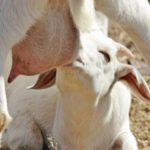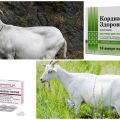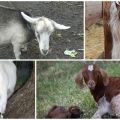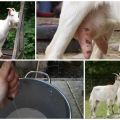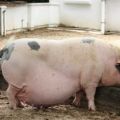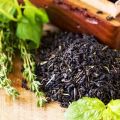Reasons and what to do if the goat cannot give birth by itself and prevention
Nature provides that animals give birth on their own, but most owners do not abandon their pets at this moment and try to help. After all, even a goat that has given birth many times may have problems, and the first calf needs special supervision. If a goat cannot give birth on its own, what to do in this case and how to help, this question worries the novice owners of subsidiary farms, especially if there is no doctor nearby.
Causes of the problem
Pregnancy in goats lasts 150 days, if the mating time is known, it is easy to calculate the date of birth, taking into account deviations of 3-5 days in one direction and the other. They begin to prepare the goat for childbirth gradually:
- They reduce the nutritional value of feed so as not to overfeed the animal, and the kids were not too large.
- Milk once a day.
- Do not massage the udder.
2.5-2 months before giving birth, the female stops milking, increases the nutritional value of feed and is transferred to a separate, dry, clean and warm enclosure. The animal needs daily walks if the lambing does not occur in the winter.
There are many factors that affect the severity of labor. The first lamb is heavier than the next, even if everything goes well. A goat cannot give birth in the following cases:
- weak labor activity;
- the presence of a narrow pelvis;
- large kids;
- incorrect presentation;
- the kid's legs are tangled.
Help may be needed after lambing, with the discharge of the placenta, during the recovery period after childbirth.

What to do if a goat cannot give birth
With weakness of labor, 1-1.5 milliliters of "Oxytocin", "Uteroton" are administered or the animal is given amniotic fluid, which is collected in a clean dish at the time of rupture of the fetal bladder. If the amniotic fluid is cloudy, with an unpleasant odor, you should not give it to the goat. The injection is performed subcutaneously or intramuscularly. If the attempts are normal, but the animal cannot give birth, help should be provided. First, you should gently massage the goat's abdomen in the direction from the abdomen to the genitals. Then you should put on a rubber or oilcloth apron, wash your hands thoroughly with soap, treat them with alcohol, vodka or cologne and grease with petroleum jelly.
You should feel the fetus, fix the legs if they get tangled. Then put a loop on them and pull gently at the moment of pushing. You can pull without a loop, with your hands. All manipulations must be done carefully. After giving birth, the goat must be watered. If you don't drink yourself, a rubber bulb will do. Water is taken into it and poured into the mouth from either side, where there are no teeth.
The kids that have appeared should be examined, their nose cleaned and the mucus wiped off with a towel, if the goat does not have the strength to lick them. Then the babies are given colostrum. Children who have not received colostrum grow weaker.
After birth, the kids should wait for the afterbirth. Normally, it comes out 3-4 hours after the completion of labor. If there is no placenta, the injection of "Oxytocin" should be repeated. In case of incomplete discharge, the goat should be injected with an antibiotic ("Gentomycin", "Azithromycin").
Important: do not pull or tear off the visible part of the placenta.
Experienced breeders advise the next day after giving birth to rinse the uterine cavity with a bright pink solution of potassium permanganate or furacilin solution. It is better to do this with the help of an Esmarch mug (a rubber heating pad with a long tube and tip). Within a few days after (3-7, depending on the condition) of childbirth, the animal is given nettle or watered with a decoction. Steamed parsley or dill seeds work great.
To give the animal strength, offer the goat some glucose or 1-2 wedges of a bar of chocolate. The goat should be in a separate pen, on a clean, dry bedding, cats and dogs should not be allowed in the barn.

Prevention
The goat should be well fed before lambing, but not overfeed. The menu should contain vegetables (boiled potatoes, carrots, pumpkin). Compound feed or oats must be introduced into the diet, from 100 grams the weight is gradually brought to 500-700 grams per day.
A month before giving birth, they begin to give the goat vitamins ("Felucene", "Vitam"), exactly following the manufacturer's instructions. Succulent goats are often prescribed calcium supplements such as gluconate. They continue to be given after lambing.
Walking is also an important part of prevention. When walking, goats get the necessary vitamin D. Walking should be done only in good weather.
Of course, in the absence of experience, it is possible to independently give birth to an animal only as a last resort, if there is no way to call a veterinarian. Good care and responsibility of the owners allow you to help the animal even in very difficult cases.


